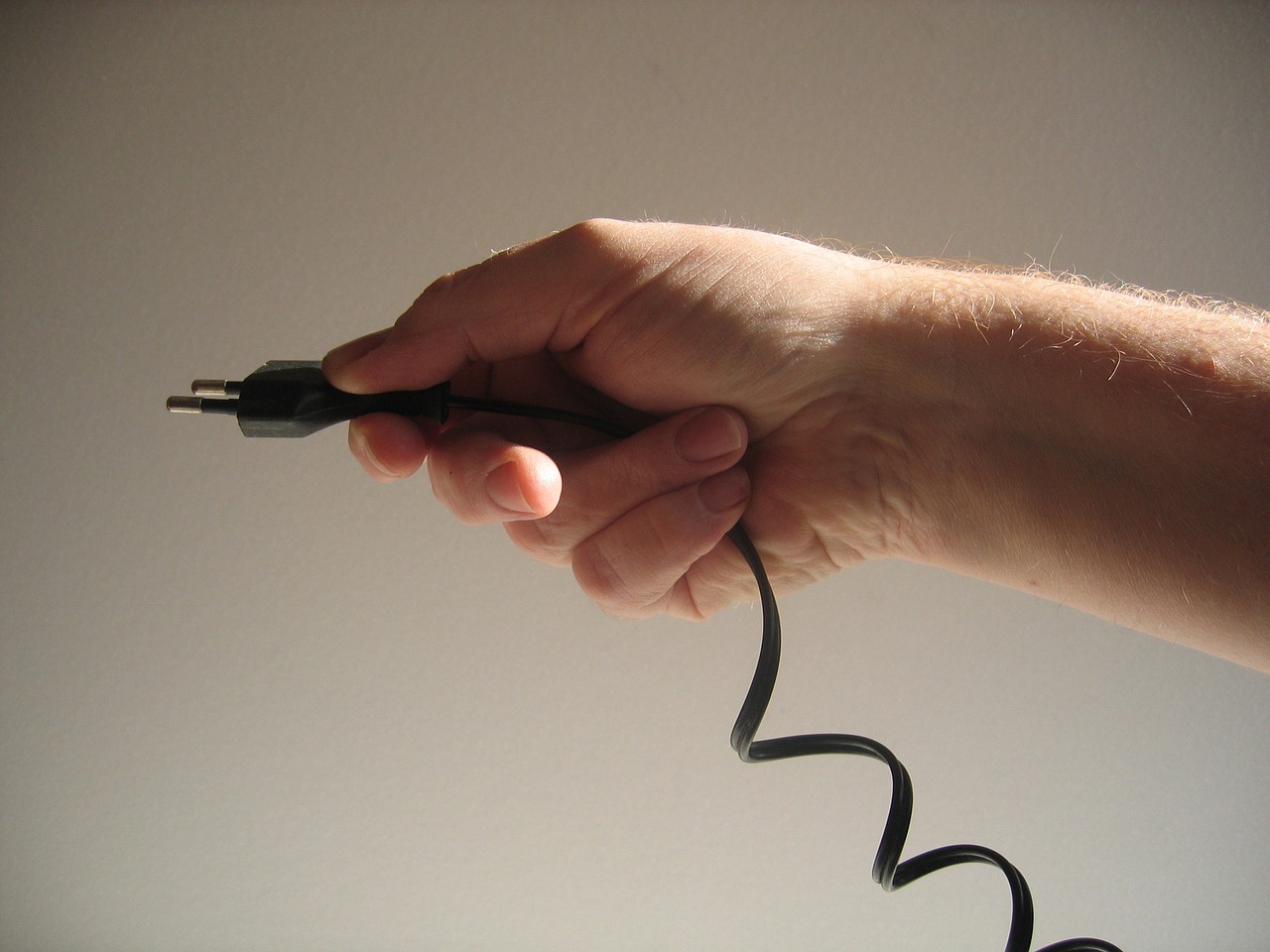Shop Cables for Sale - Fiber Optic Cables, Network Cables, Outdoor Cables, Bulk Ethernet Cables, Cat6 Cables, Cat5 Cables, Cat5e Cables, Crypto Cables and Data Center Cables.
Power Cords and Power Cables: Understanding Their Functions and Differences
Power Cables and Cords at Cables.com
Understanding the intricacies of power cords and cables is essential for anyone dealing with electronics.
by Vikas Dayal • June 29, 2024
Understanding the intricacies of power cords and cables is essential for anyone dealing with electronics. These components serve as the lifelines of electrical and electronic devices, delivering the necessary electricity from the power source to your equipment.
Power cords and cables vary significantly in their design and specifications, including different voltage and current ratings, connectors, and material construction. As such, choosing the right type can make a significant difference in the safety and efficiency of your devices.
Safe and efficient electrical systems hinge on compatibility and adherence to safety standards. Power cords and cables must meet specific regulatory requirements and be suitable for the intended applications, from powering small household appliances to providing energy to large data centers.
When purchasing new power cords or cables, it's important to select those that comply with industry standards and are appropriate for the voltage and current demands of your devices. For a reliable selection meeting these criteria, Cables.com offers a comprehensive range of products suitable for a variety of needs.
Key Takeaways
- Power cords and cables are fundamental for providing electricity to devices, with a wide range of specifications.
- Choosing the correct power cord or cable is crucial for the safety and efficiency of electronic equipment.
- It is important to buy power cords and cables that adhere to regulatory standards and are properly rated for your specific applications.

Fundamentals of Power Cords and Cables
Understanding the basics of power cords and cables is essential for ensuring safe and efficient power delivery to your devices and appliances.
Types and Varieties
Power cords and cables come in numerous types, each designed for specific applications. AC power cords are commonly used in home and office environments. They usually feature a plug on one end and a connector on the other, facilitating the connection between the power source and the device.
For instance, C14 to C13 connectors are typically seen in data centers to connect servers to the power distribution units. C19 to C20 connectors cater to high-power devices, providing a secure connection suited for equipment drawing more power. 5-15P to C13 connectors are standard for office electronics. Specialty cables like colored power cables can help identify connections quickly, and outdoor power cords are built to withstand weather conditions for external applications.
Electrical Specifications
When selecting power cords and cables, it is critical to be aware of their electrical specifications, which indicate their capacity to carry current without overheating or degrading. Look for the voltage rating, which should match the voltage of the power source, and the amperage rating, which should meet or exceed the current drawn by the connected device. Incorrect specifications can lead to inefficient performance or safety hazards.
Materials and Insulation
The conductor material in power cables significantly impacts their performance. Copper is a highly conductive and flexible option, making it a popular choice for various cables. Aluminum, being lighter and less costly, is used where weight and cost are critical considerations despite its lower conductivity.
The insulation and sheathing materials, such as rubber and PVC, protect against environmental factors and electrical interference. They must be chosen based on the environment in which the cable will operate—for instance, rubber for high flexibility and resistance to wear, and PVC for general resistance to moisture and chemicals.
When in need of quality power cords and cables, you should consider visitingCables.com, which offers a wide selection guaranteed to fit your specific requirements.
Standards and Compatibility
When selecting power cords and cables, understanding the differing standards and how they affect compatibility is crucial.
NEMA Standards
The National Electrical Manufacturers Association (NEMA) establishes guidelines for electrical equipment and components in North America. If you're purchasing power cords in the United States, you'll encounter NEMA standards which categorize cords by plug and receptacle shapes, current ratings, and voltage. For example, a NEMA 5-15 is a typical three-prong plug that's rated for 15 amps and is the standard for most household electrical devices.
IEC Standards
On the international stage, International Electrotechnical Commission (IEC) standards are more prevalent. Unlike NEMA's focus largely on North America, IEC standards are recognized and accepted worldwide. For instance, the IEC 60320 series specifies connectors for household appliances and IT equipment. A common one you might find is the IEC 60320 C13, utilized in most desktop computers and monitors.
Compatibility and Interconnectivity
When interfacing devices from different regions or manufacturers, ensuring compatibility is key. NEMA and IEC standards are designed to ensure that power cords can interconnect safely and reliably. It's common to find devices that have an IEC connector input, allowing various NEMA standard power cords to be used depending on your location. When buying power cords and cables, Cables.com offers a variety of options compliant with these standards to suit your needs.
Applications and Use Cases
Power cords and cables are integral components, ensuring the reliable delivery of electricity to devices and infrastructure. Their applications span from simple computing needs to complex power distribution systems and their use in demanding environmental conditions.
Computers and Electronic Devices
In the realm of computers and electronic devices, power cords such as the C14 to C13 connectors are commonplace. These cords power rack-mounted equipment and data center devices, while the C19 to C20 connectors are used for high-power servers. For desktops, the 5-15P to C13 connectors are the standard, providing electricity to the computer's power supply unit. These, along with colored power cords, allow for easy identification and management of connections in complex setups.
Power Distribution Systems
Moving to larger-scale applications, power distribution systems incorporate medium-voltage power cables to transmit electricity across substations and utility networks. These systems depend on robust cables, capable of handling high voltages for long-distance transmission. For home or office use, power cord splitters offer a convenient way to expand a single electrical outlet into multiple power sources, essential for places with numerous devices but limited sockets.
Specialized Environments
In specialized environments, the resilience of power supply cords is crucial. Watertight power cords are designed for outdoor or marine applications, ensuring safety and uninterrupted power even in wet conditions. Outdoor power cords serve the dual purpose of durability against environmental elements and flexibility for use in landscaping, construction, or outdoor events.
International power cords are key for devices that are used globally, adapting to various international standards and voltages. For generator setups, generator power cords are specifically crafted to connect generators to appliances or transfer switches, providing a reliable source of power during outages or remote operations.
Remember to choose the right power cable for your needs at cables.com, where a broad selection of tailored solutions can be found for virtually any application.
Safety and Regulations

When handling power cords and cables, it's vital to adhere to safety practices and comply with regulatory standards to prevent electrical hazards.
Grounding and Protection
Your safety when using electrical equipment hinges on proper grounding and protection mechanisms. Grounded power cords, identifiable by their three-pronged plugs, such as the 1-15P, ensure that excess electricity has a safe path to the earth, reducing the risk of shock. This is especially critical in the event of a power surge or equipment malfunction.
For instance, a Type A receptacle, which is commonly used in North America, is designed to accept both 1-15P and grounded plugs, making it versatile while maintaining safety. GFCIs (Ground Fault Circuit Interrupters) are a form of protection for power cords in moist environments, instantly cutting off the power if an imbalance is detected.
- Important: Always check that the power cord is grounded before use.
- Remember: Regularly inspect GFCIs to ensure they function correctly.
Outdoor and Environmental Considerations
Using power cords outdoors requires careful consideration of the temperature and environmental conditions. Outdoor extension cords are specially constructed to withstand weather elements, having robust insulation that can endure varying temperatures and resist moisture and sunlight.
- Cord Selection: Choose cords rated for outdoor use and ensure they are appropriate for the ambient temperature.
- Safety Tip: To prevent moisture ingress, make certain that outdoor connections are covered and the cord's rating matches the intended application.
Compliance and Certification
Adherence to compliance and certification standards is non-negotiable for the safety and legality of power cord use. Certification marks from organizations like UL or ETL signify that a product has been tested and meets specific safety standards.
These standards cover aspects such as maximum voltage and current, construction, and testing requirements. Compliance ensures that equipment like the common 1-15R receptacle meets established criteria for safety and function.
- Check for Certifications: Look for labeling on cords and packaging indicating compliance with safety standards.
- Safe Purchase: When seeking to buy power cords and cables that ensure adherence to safety regulations, consider reliable sources such as Cables.com.
Always follow manufacturer instructions and local regulations to guarantee that your use of power cords and cables is both safe and compliant.
Frequently Asked Questions
Understanding power cord compatibility, identifying various types, and being aware of safety standards are crucial for ensuring that you properly connect and operate your electronic devices.
What determines the compatibility of power cords with different devices?
The compatibility of power cords with electronic devices is determined by several factors including the type of plug, voltage rating, amperage, and the socket interface it's designed for. Different countries have varying standards and electrical systems, so it's essential to match the power cord to the specific requirements of your device and local electrical system.
How do you identify different computer power cord types?
Computer power cords can be identified by the connector type used on the end that plugs into the power supply. Common types include IEC C13, commonly used for desktop computers, and IEC C7, often used for smaller devices and some laptop chargers. The plug end, which goes into the wall socket, may comply with NEMA standards in North America or with other standards if designed for international use.
What should be considered when choosing a power cord for a PC monitor?
When selecting a power cord for a PC monitor, it's important to consider the voltage and amperage requirements of the monitor, the correct plug type for your region's sockets, and the length of the cord for convenient placement. Always choose a cord that can handle the power specification of your monitor to avoid potential electrical hazards.
What are the safety standards for AC power cords?
AC power cords must comply with safety standards and regulations set by national and international certification bodies, such as UL in the United States or the CE mark in Europe. These standards ensure that power cords are made from fire-resistant materials and have a secure connection to prevent electrical fires and other hazards.
How do I choose the correct type of power cable for my monitor?
To choose the correct power cable for your monitor, check the monitor's user manual for voltage and current requirements and ensure the power cable meets these specifications. Also, the cable should have the appropriate connectors for the monitor and power outlet. For a wide selection of compatible power cables, you can visit Cables.com.
What advantages do power cords with multiple outlets offer?
Power cords with multiple outlets, often known as power strips or extension blocks, allow you to connect several devices to a single power source. This is particularly useful when you have a limited number of wall outlets or when you want to manage cable clutter by having a centralized power connection point for your electronic devices.











